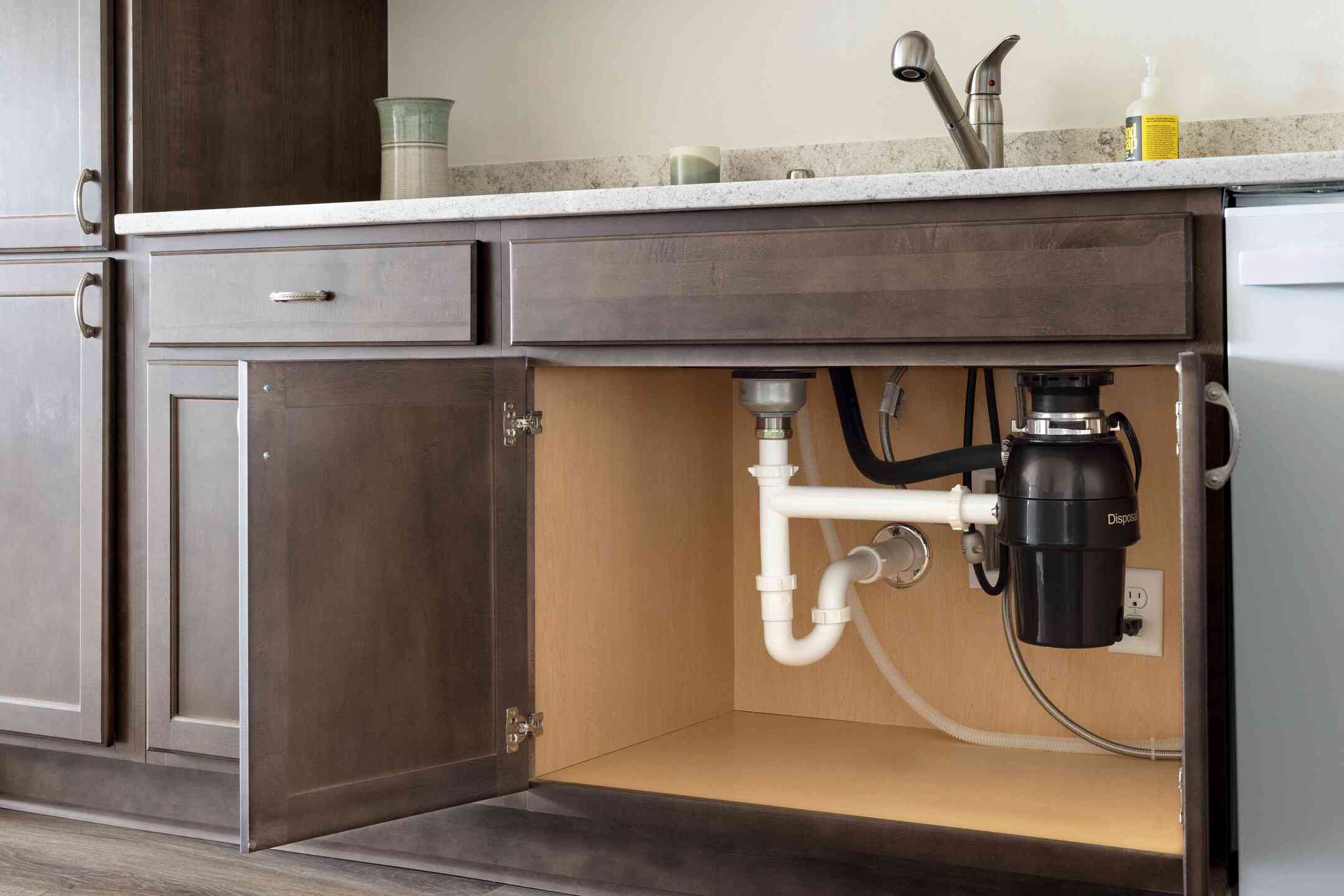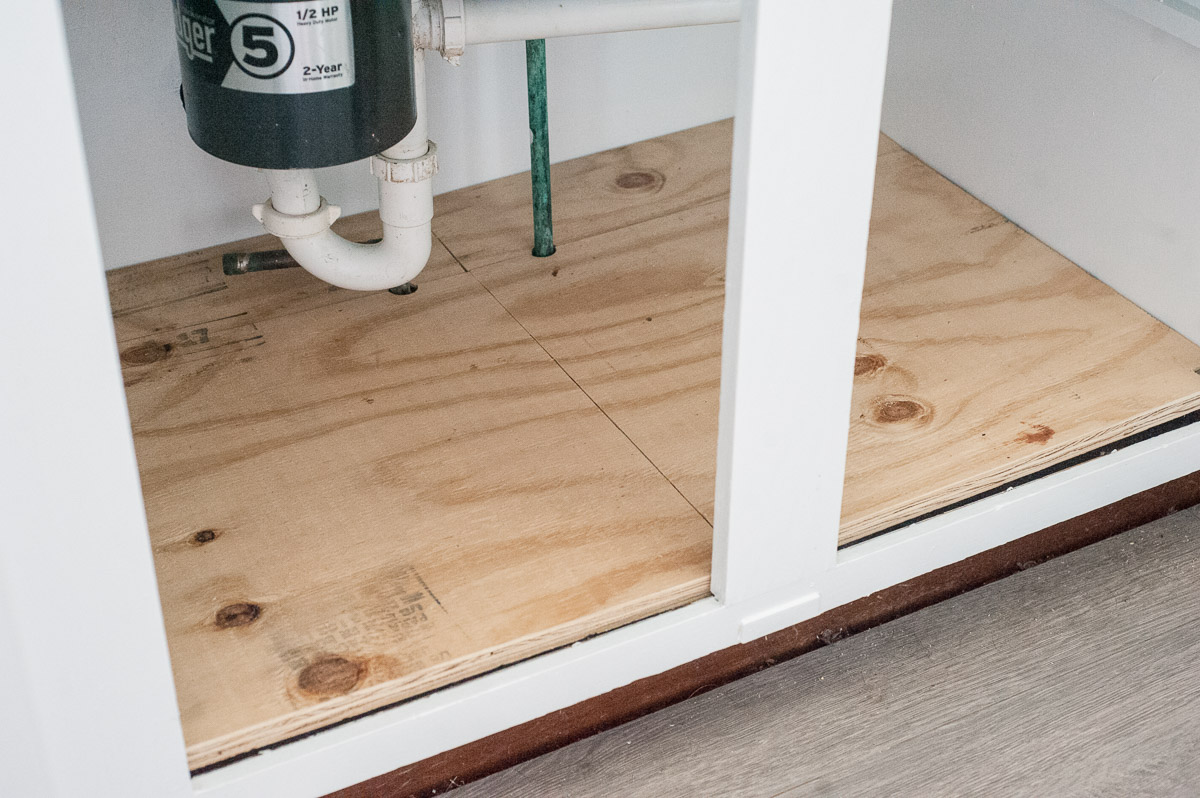Understanding the Problem: Replace Under Sink Cabinet Floor

The floor beneath your kitchen sink cabinet may seem like a small detail, but its condition can significantly impact the functionality and safety of your kitchen. A damaged floor in this area can lead to various problems, ranging from minor inconveniences to serious health hazards.
Common Reasons for Replacement
The floor under the sink cabinet is often subjected to moisture and wear and tear, making it prone to damage. Several factors contribute to the need for replacement:
- Water Leaks: Leaky pipes or faucets are the most common culprits. Water can seep through cracks in the floor, causing rot, mold, and structural damage.
- Excessive Moisture: Even without leaks, the constant presence of moisture from sinks and dishwashers can weaken the floor over time.
- Heavy Appliances: The weight of a dishwasher or garbage disposal can put stress on the floor, leading to cracks and sagging.
- Poor Ventilation: Insufficient ventilation allows moisture to accumulate, accelerating the deterioration of the floor.
Potential Hazards of a Damaged Floor
A damaged floor under the sink cabinet poses various risks, including:
- Structural Instability: Rotting or weakened floorboards can compromise the structural integrity of the cabinet and surrounding area, potentially leading to collapses.
- Mold Growth: Moisture encourages mold growth, which can trigger allergies, respiratory problems, and other health issues.
- Pest Infestations: Damp conditions attract pests like termites and cockroaches, which can damage your home and pose health risks.
- Water Damage: A damaged floor can lead to water damage in other areas of the kitchen, including walls, cabinets, and appliances.
Signs of a Damaged Floor
Recognizing the signs of a damaged floor under the sink cabinet is crucial for addressing the problem promptly:
- Soft or Spongy Floor: If the floor feels soft or spongy when you step on it, it may be a sign of rot or water damage.
- Cracks or Gaps: Cracks or gaps in the floorboards can indicate structural weakness or water damage.
- Swelling or Buckling: Swelling or buckling of the floorboards is a clear sign of excessive moisture absorption.
- Musty Odor: A musty odor emanating from the cabinet area suggests mold growth, a serious health hazard.
- Visible Water Stains: Water stains on the floorboards or cabinet walls are a telltale sign of leaks.
Replacement Options and Considerations

Now that you understand the problem, let’s delve into the various options for replacing your under-sink cabinet floor. Choosing the right material is crucial, as it will affect the durability, aesthetics, and longevity of your kitchen.
Material Options and Considerations
When selecting a replacement material, it’s important to weigh the pros and cons of each option. This involves considering factors like cost, durability, ease of installation, and compatibility with your existing flooring and overall kitchen design.
Here’s a breakdown of popular materials:
- Plywood: This is a cost-effective and readily available option. It’s relatively easy to install and offers good strength. However, plywood can be susceptible to moisture damage, so it’s essential to seal it properly.
- MDF (Medium-Density Fiberboard): MDF is another affordable option, offering a smooth surface that’s easy to paint or laminate. However, it’s less durable than plywood and can be more prone to moisture damage.
- Marine Plywood: This is a premium choice designed for damp environments. It’s highly resistant to moisture and offers excellent durability, making it ideal for under-sink areas. However, it’s more expensive than standard plywood.
- PVC (Polyvinyl Chloride) Sheets: PVC sheets are water-resistant and easy to clean, making them a practical option for under-sink areas. They come in various colors and patterns, allowing for customization. However, they may not be as strong as other materials.
- Epoxy Flooring: Epoxy flooring is a durable and moisture-resistant option that creates a seamless, hygienic surface. It’s ideal for areas prone to spills and stains. However, it requires professional installation and can be expensive.
“The choice of material depends on your budget, the level of moisture exposure, and the desired aesthetic.”
Matching the Existing Flooring
Consistency in your kitchen design is crucial. Ideally, the under-sink floor should match or complement the existing flooring in the rest of the kitchen.
- Matching Material: If possible, use the same material as your existing kitchen flooring. This creates a cohesive look and avoids any visual clashes.
- Matching Color and Texture: If using a different material, try to match the color and texture of your existing flooring. This creates a sense of continuity without being overly identical.
- Complementary Colors and Textures: If you want a more distinct look, choose a material with complementary colors and textures. For example, if your kitchen has hardwood floors, you could use a light-colored tile or a textured vinyl sheet for the under-sink area.
Steps for Replacing the Under-Sink Floor

Replacing the under-sink floor is a straightforward process that can be completed with basic tools and a little bit of time. This guide will provide you with the step-by-step instructions needed to ensure a successful replacement.
Removing the Existing Floor
Removing the old floor is the first step. It is crucial to do this carefully to avoid damaging the cabinet or plumbing.
- Begin by clearing out the cabinet and disconnecting the plumbing. This includes the sink drain, water supply lines, and any other plumbing fixtures connected to the cabinet.
- Carefully remove any screws or fasteners that hold the old floor in place.
- Once the screws are removed, the floor should lift up easily. If it’s stuck, use a pry bar or a scraper to gently loosen it.
- If the floor is made of multiple pieces, remove each piece individually.
- After removing the floor, inspect the cabinet for any damage. If you find any damage, repair it before installing the new floor.
Installing the New Floor
Once the old floor is removed, you can start installing the new floor. The type of material you choose will determine the installation process.
- If you are using a pre-made floor panel, simply position it in the cabinet and secure it with screws or fasteners.
- For a DIY floor, you will need to cut the material to size. Use a jigsaw or a utility knife to cut the material according to the cabinet dimensions.
- If you are using plywood, ensure it is properly sealed to prevent water damage. Apply a sealant to all surfaces before installing the floor.
- If using tile, ensure you use a waterproof grout and sealant.
- For vinyl flooring, simply roll out the material and cut it to size. Secure it with double-sided tape or adhesive.
- Once the new floor is installed, ensure it is level and secure.
Reassembling the Sink Cabinet, Replace under sink cabinet floor
After installing the new floor, it is time to reassemble the cabinet.
- Reconnect the plumbing fixtures. Make sure the connections are tight and leak-proof.
- Turn the water supply back on and check for any leaks.
- Replace any screws or fasteners that were removed during the process.
- Test the sink to ensure proper drainage.
Replace under sink cabinet floor – Revamping your under-sink cabinet floor can be a great way to breathe new life into your bathroom or kitchen. And while you’re at it, why not add a touch of rustic elegance with a white oak accent cabinet ?
It’s the perfect way to create a focal point and add some warmth to the space. With a little effort, you can transform your under-sink area into a stylish and functional haven.
Replacing the floor under your sink cabinet is a great way to freshen up your kitchen, but don’t forget about the cabinets themselves! If you’re dealing with coffee stains on your white cabinets, you can find some fantastic cleaning tips here.
Once your cabinets are sparkling, that new floor will really make your kitchen shine!
